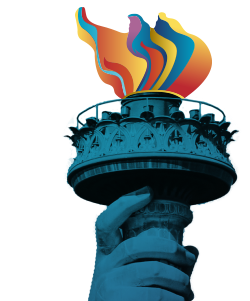Vija Celmins’s meticulous paintings and drawings focus on objects found in nature, such as oceans, night skies, deserts, and spiderwebs — and often take years to complete. Her work is held in the collections of more than 20 of the world’s top museums, including the Museum of Modern Art in New York, the Institute of Contemporary Arts in London, and the Centre Pompidou in Paris.
Celmins has had more than 40 solo exhibitions and retrospectives, and her awards include a Guggenheim Fellowship, a MacArthur Fellowship, and the Carnegie Prize.
“There aren’t really rules for painting, but there’s certain facts and fictions about painting,” she has said about her work. “Part of what I do is document another surface and sort of translate it. They’re like translations, and then part of it is fiction, which is invention.”
Celmins was born in Latvia to a father who had been orphaned during World War I and a mother who came from a sharecropper family. Following the Soviet army’s invasion, the family left Latvia on a German ship when Celmins was five years old. Living in refugee camps until Celmins was 10, the family eventually landed in the United States. Once here, her parents worked long hours and, because she did not yet speak English, Celmins often retreated to her room to draw.
“In America, I used to draw all the time because I couldn’t really understand what they were talking about,” she said. “So, I used to draw things, and then teachers were always encouraging me.”







